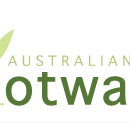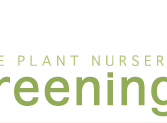 |
Our Indigenous plants - Native Hemp Bush
Many customers have shown a keen interest in one particular plant over the years. This is the
Gynatrix pulchella (Native Hemp Bush). Of course I get the usual sniggers about the common name but it is quite an apt name. Aborigines used the fibre of the Hemp Bush to help bind the rough canoes that were made from the bark of the Paperbark trees (mostly Swamp Paperbark or Melaleuca ericifolia or Scented Paperbark or M. squarrosa).
The Hemp Bush is a quick growing but relatively short lived species. It grows along watercourses and can withstand quite long periods of flooding. Unlike many species in our region it appears in both the high rainfall Otway streams as well as the rain shadow country of the basalt plains where it clings to the banks of the Barwon, Leigh and Moorabool Rivers amongst others. In the Otways it is seen growing with other high rainfall loving understorey plants including Austral Mulberry, White Elderberry, Musk Daisy, Satinbox, Mountain Correa and a myriad of ferns all growing in the shade of Messmate, Mountain Ash, Mountain Grey Gum, Blackwood and Myrtle Beech, etc. Associated plant species out on the plains are the River Red Gum, Woolly Tea Tree, Tree Violet, Swamp Gum, Yarra Gum, River Bottlebrush and Poa tussocks etc.
It is a member of the Malvaceae family of which the commercial Cotton and the garden Hibiscus and are well known representatives. Australian plants of the same family include the Flinders Range Hibiscus (Alyogne) and the Australian Hollyhock (Lavatera). Apart from its use as a fibre, the other connection Gynatrix has to Indian Hemp is they are both dioecious. In other words, they have male and female flowers growing on separate plants (she oaks, mountain pepper, native hop bush as well). Thus when collecting seed (ripens in mid summer) one plant will be laden with seed (the female) and another will be lounging around with nothing to do (the male...sorry guys!). They both flower in mid spring. The flowers are very pretty small clusters of creamy coloured, scented drooping bells. Some customers comment on how "non Australian" it looks. In fact because of its leaf shape it may even resemble a birch or alder leaf.
If you plan on revegetating a creek or watercourse, the Native Hemp should certainly be considered as well as the more common species. Once grazing animals are removed and the plants are established they should begin to self sow downstream. Don't fear, though, it's not invasive and will not become a pest weed. It grows to about 4-5 metres tall and can be coppiced. In fact cutting of the branches will stimulate new growth. It is a pretty plant for the garden as well and the kids will love having a go at tying their shoes with the native hemp string. I reckon parents might too!
Collecting seed is easy if you can find enough female plants. The seed is brown, about the size of a mustard seed and is encased in a rough "pod". This pod is about 3-4 mm diameter and should be removed before sowing the seed. While wearing a breathing mask, rub the seed pods between the hands to remove the seeds then sow the seed slightly buried without any further preparation. Viable seed will germinate within 2-3 weeks. Then watch out, they grow very quickly. We usually sow the fresh (or properly stored) seed in January where it will be ready for planting that winter or spring. It is a tough plant and doesn't mind full sun, but like all newly planted seedlings weed control around the plant is VITAL for survival.
Mike Robinson-Koss Otway Greening
Back to Dr. Tree | Previous article | Next article |











